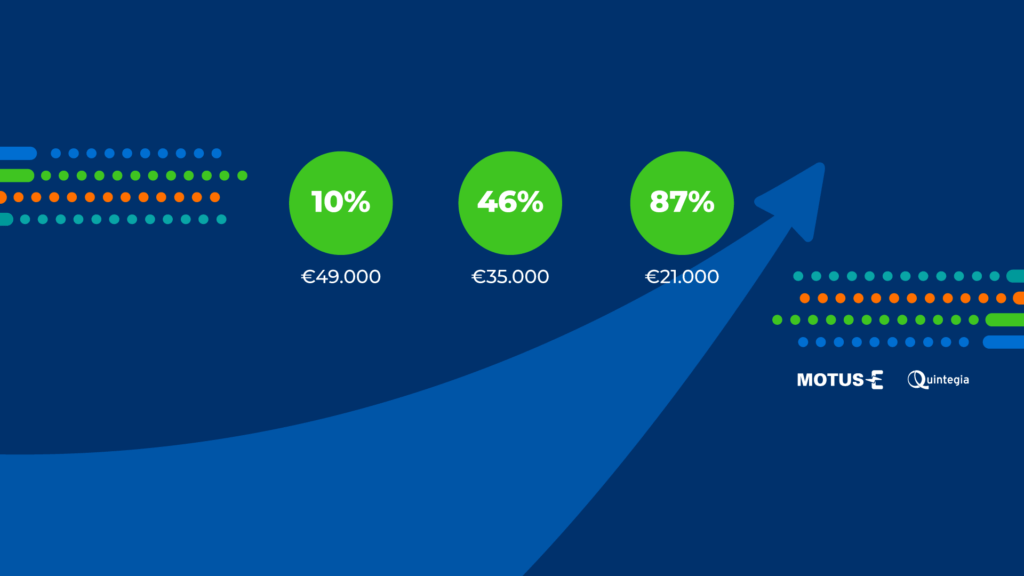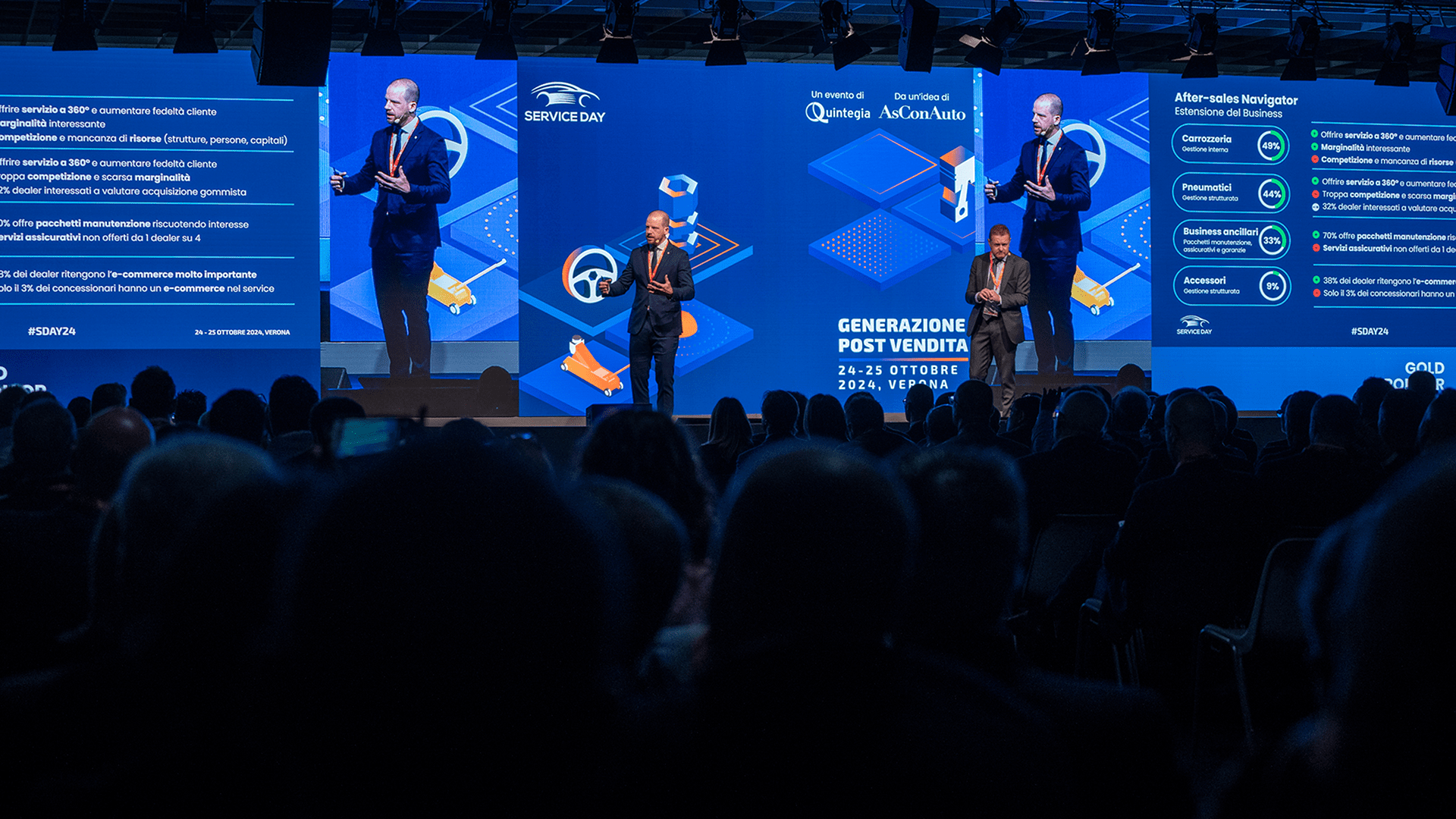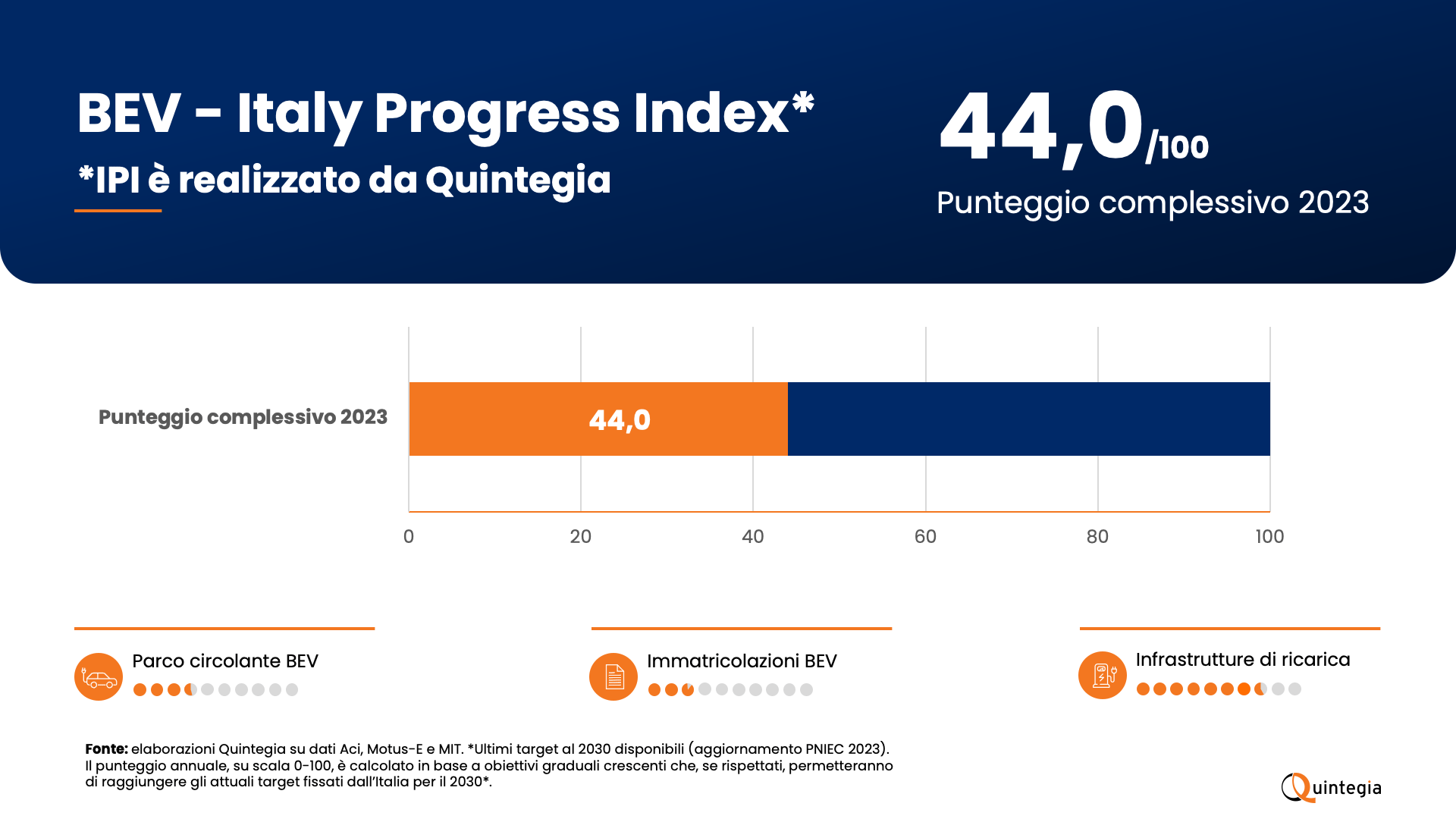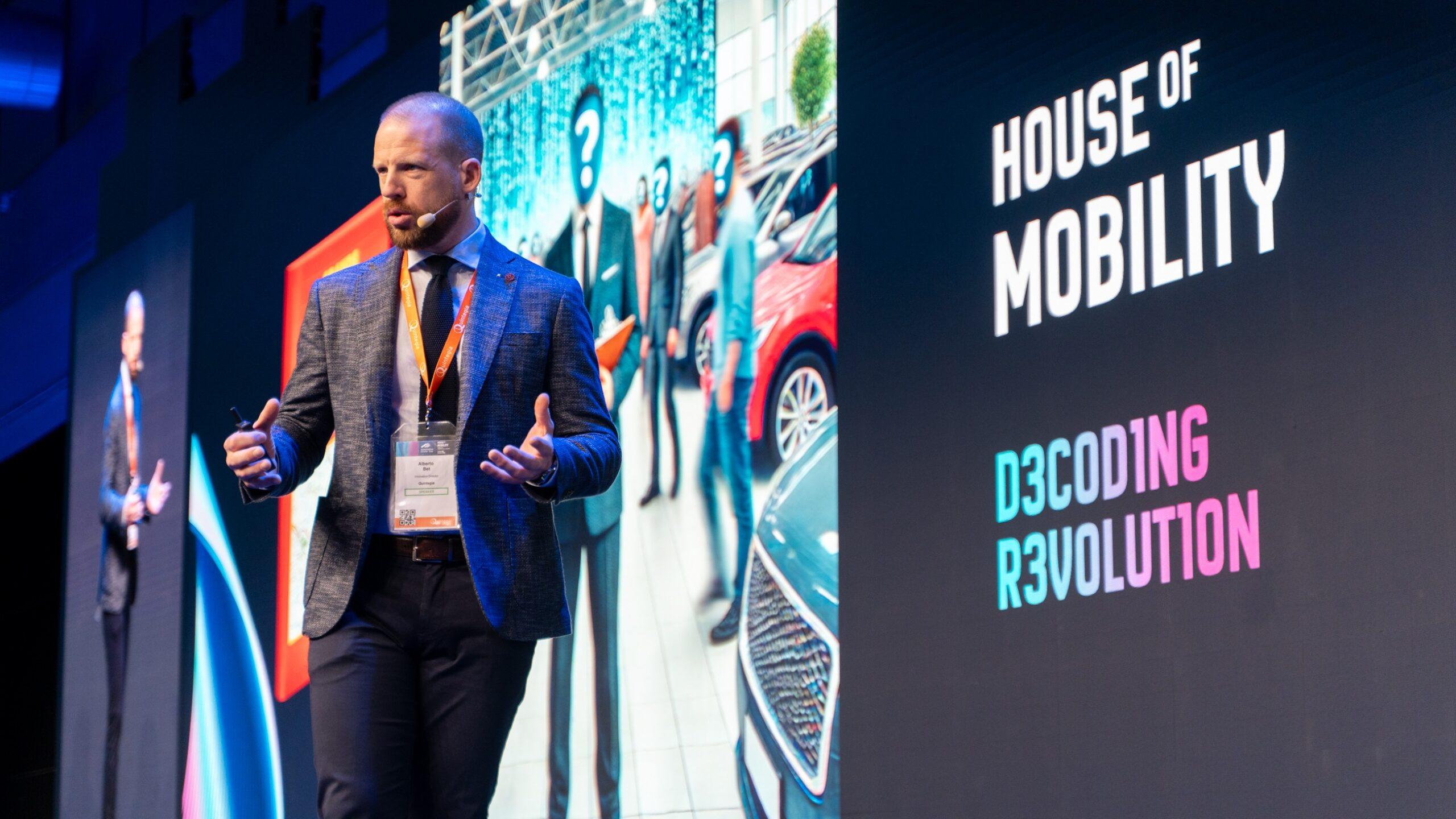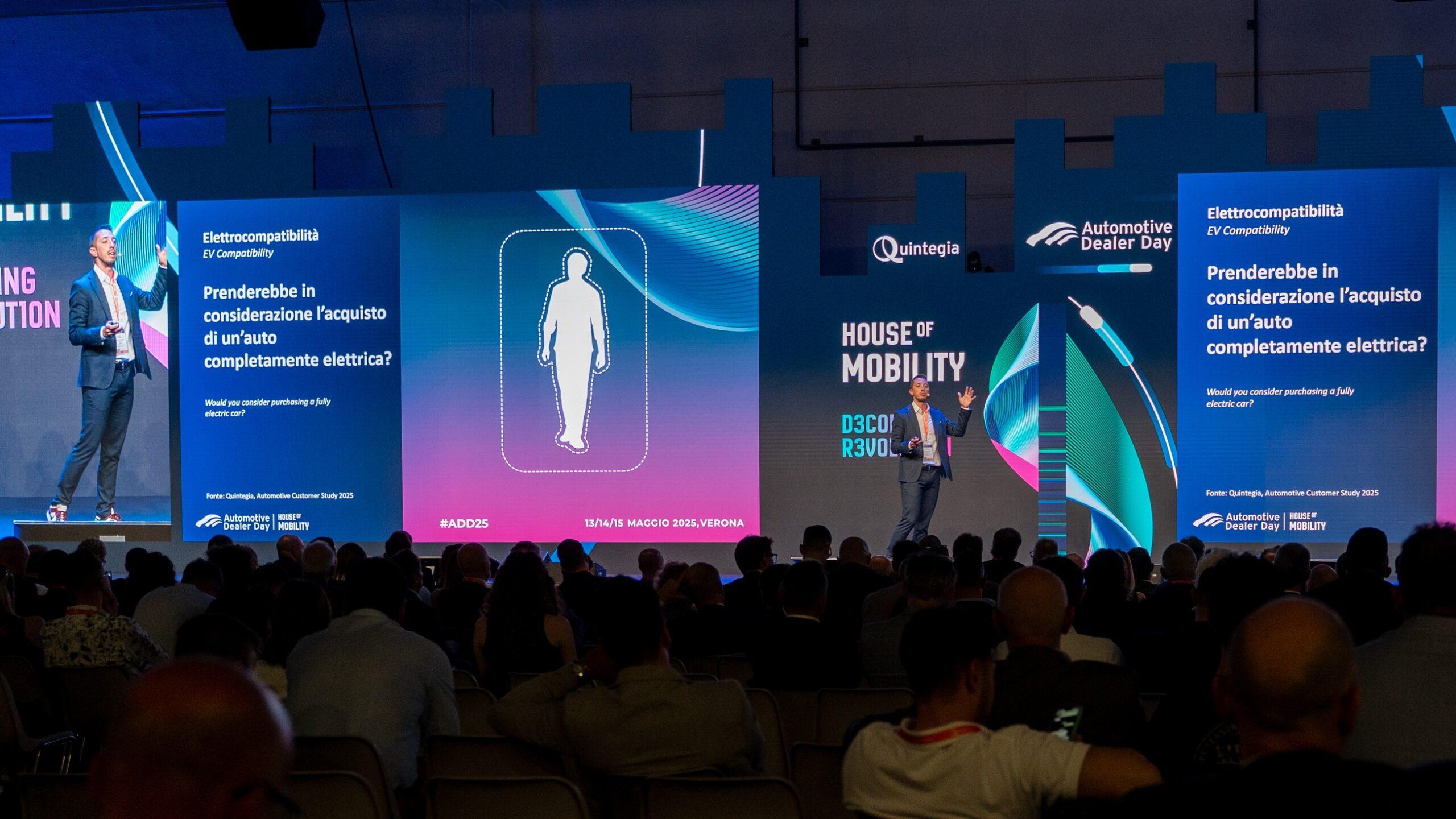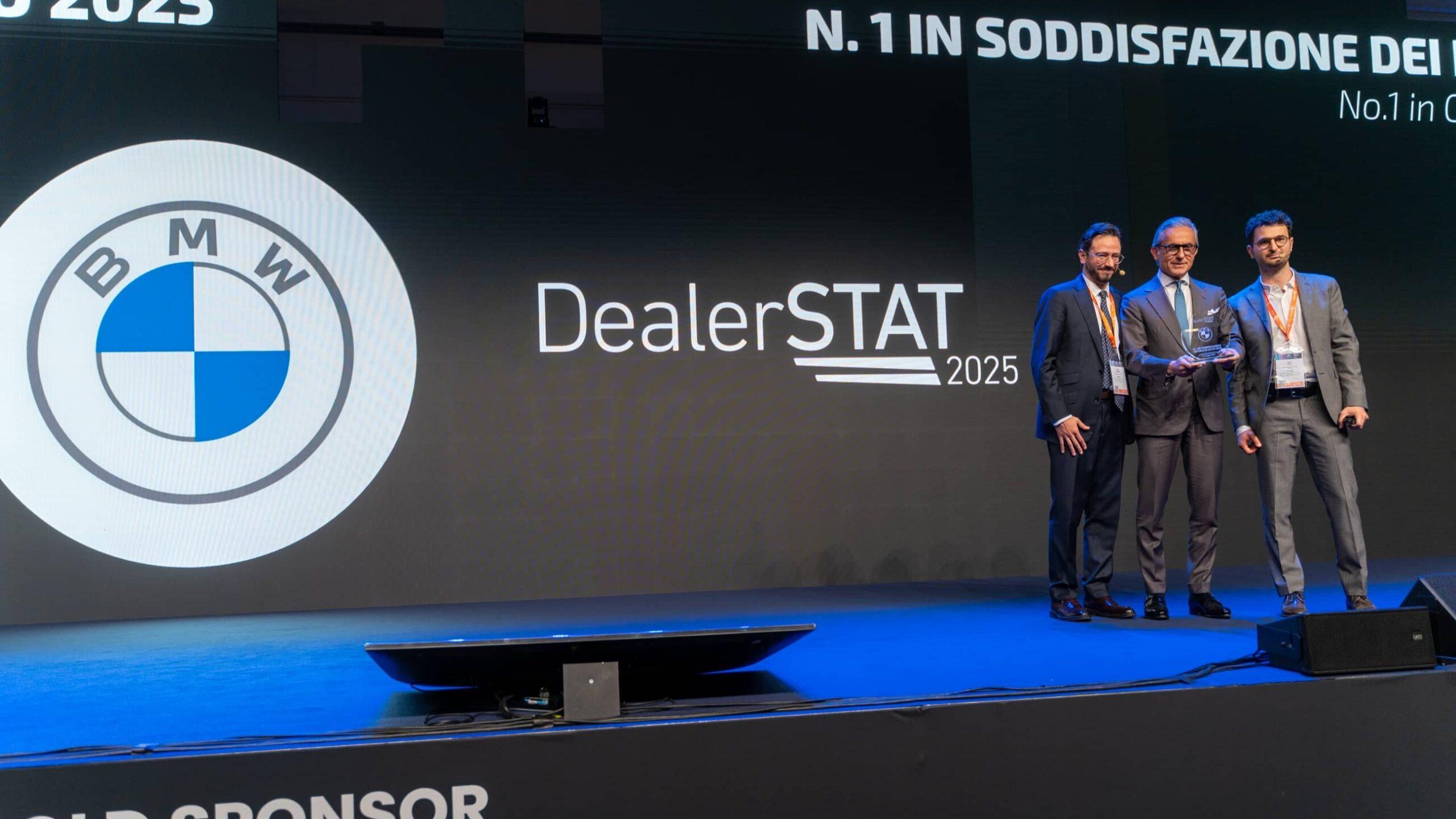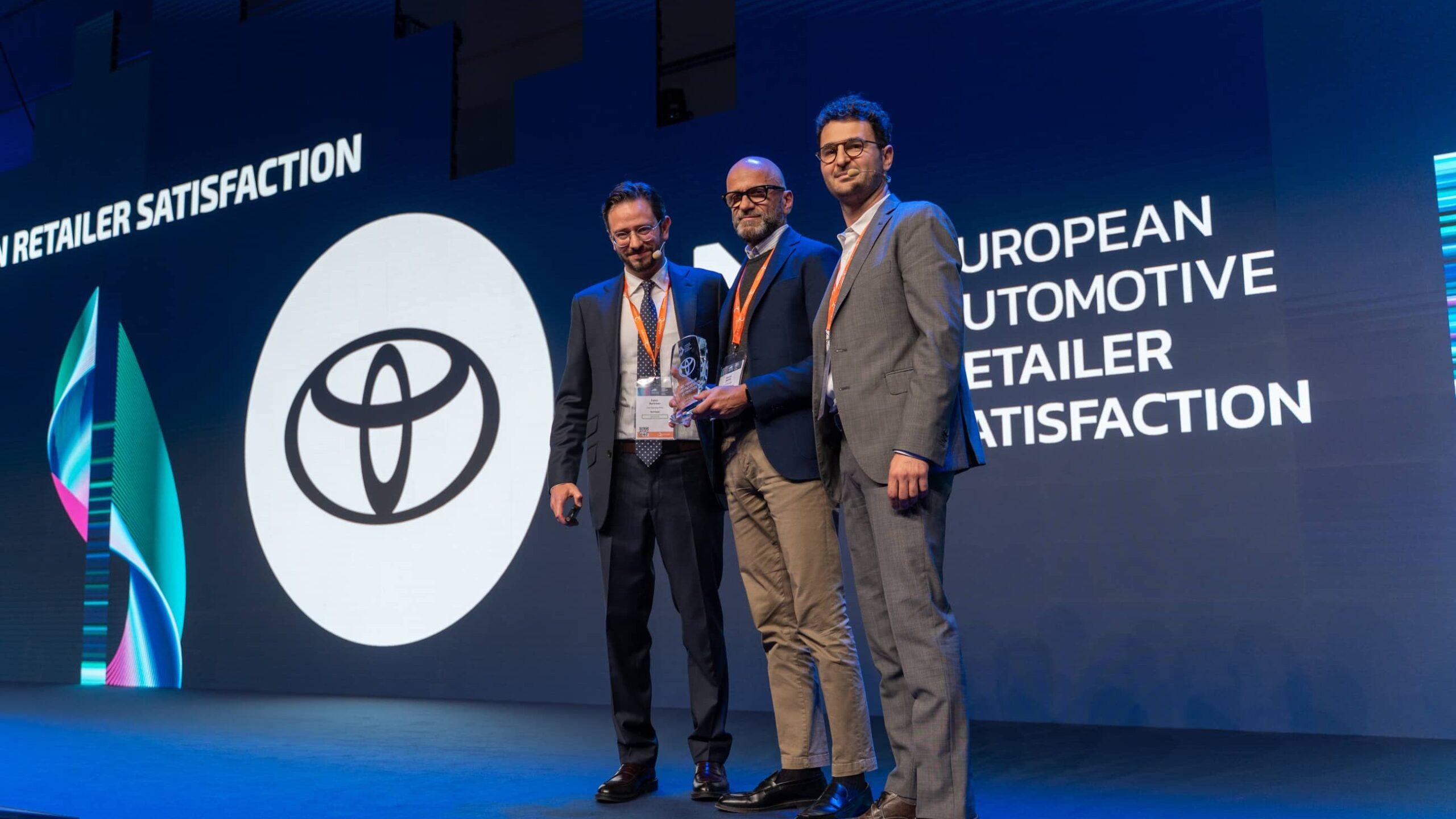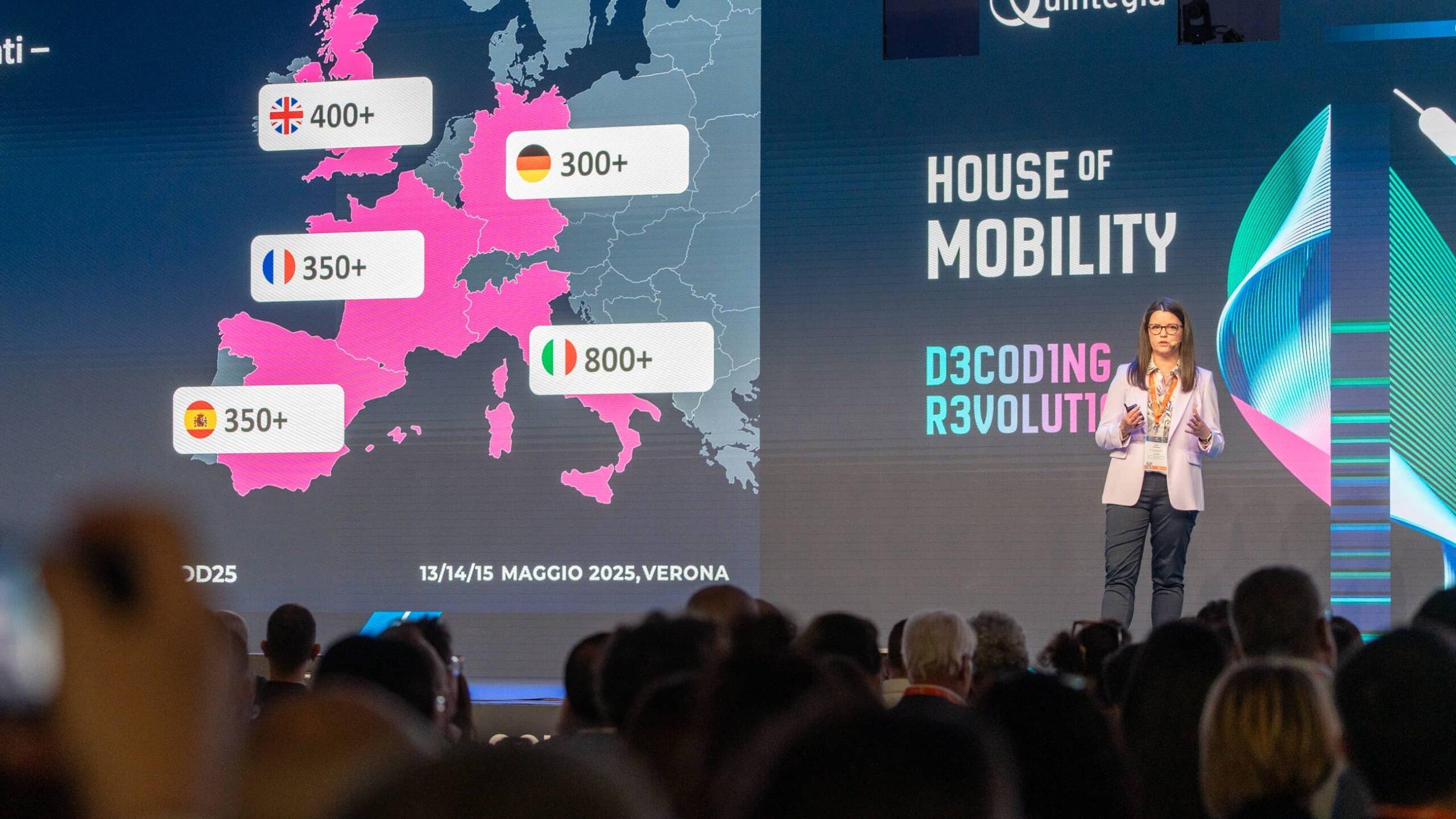Motus-E and Quintegia have recently published the study “Electric mobility: inevitable or not? Analysis from the consumers’ perspective” , which represents the largest survey conducted to date on European consumers’ attitudes toward electric vehicle (EV) purchases. The aim of the research is to analyze the possible evolution of the BEV adoption curve based solely on consumer demand, rather than a prediction of actual registrations.
According to the estimates in this study, consumer demand for electric cars will continue to grow, surpassing that for any other type of powertrain by 2025 and reaching nearly 80% by 2050.
Compared to other European countries considered in the study, the demand curve for electric cars in Italy is expected to increase more moderately in the early years. This is mainly due to the fact that Italy has the lowest annual mileage and, consequently, lower operating costs, making the transition from traditional internal combustion engine vehicles to electric vehicles less financially attractive, at least initially. This is expected to change towards the end of the 2020-2030 decade as the price gap between traditional and electric vehicles narrows, reaching a 50% demand for electric vehicles by 2030.
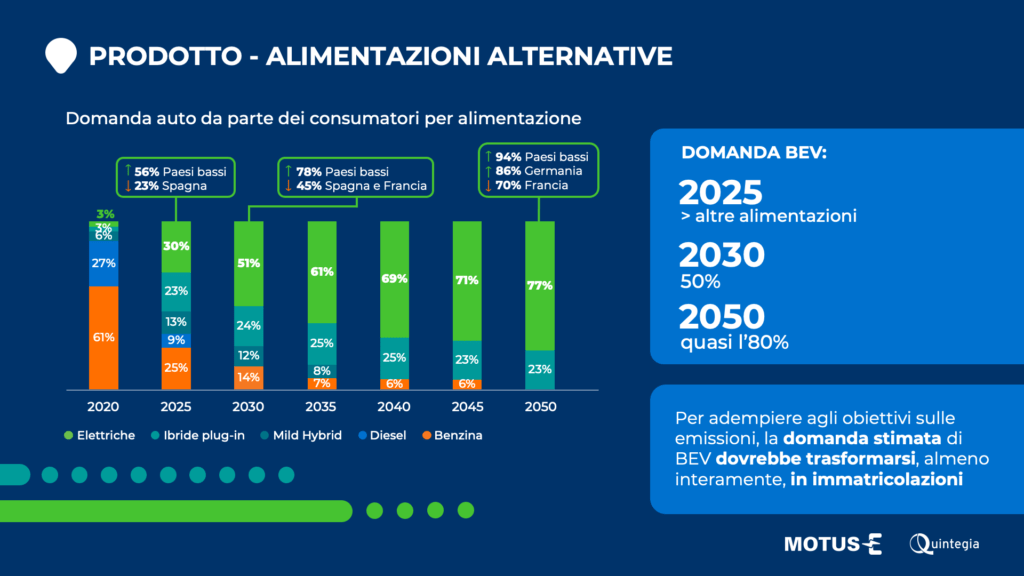
This is related to one of the main findings of the study, namely that the cost of the car is the primary determining factor in purchasing decisions. In other words, the purchase price is the variable that most influences consumer decisions.
Considering that the current cost of electric cars is, on average, 30% higher than that of traditional cars, it can be deduced that the main barrier or obstacle to the purchase of an electric car today is its initial cost. According to forecasts, the price of battery electric vehicles (BEVs) will decrease significantly, and the cost of vehicles with traditional powertrains will increase to comply with increasingly stringent emissions regulations. Therefore, it is estimated that the costs of these two powertrains will equalize by 2030 for models in the lower segments of the car market. It is not a coincidence that the demand for electric cars is projected to reach 50% by 2030, as mentioned earlier. Therefore, it can be said that, at the same price and with the expected technological advancements, consumers will prefer to purchase electric vehicles over internal combustion engine vehicles.
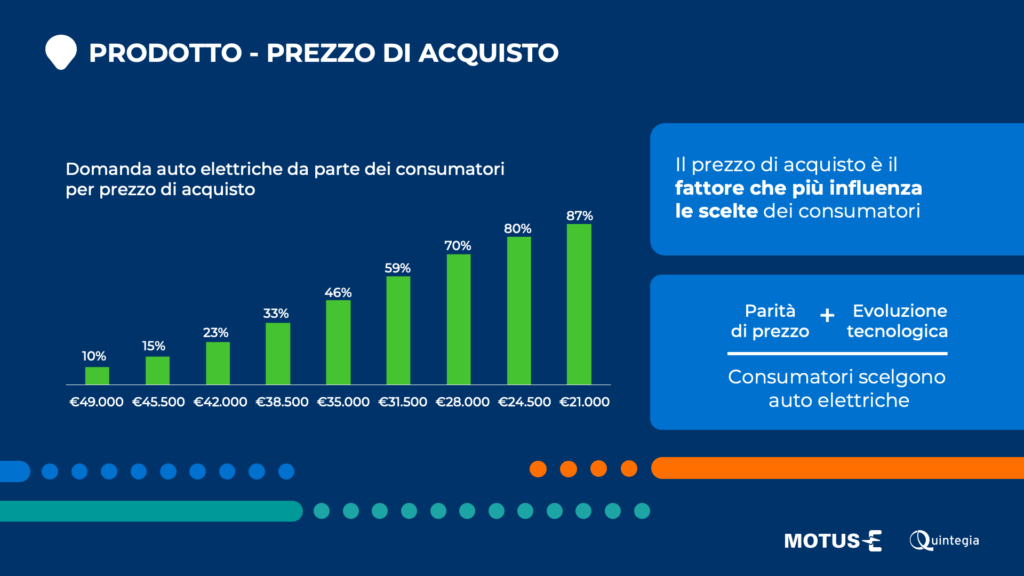
The speed at which price parity between electric vehicles and traditional vehicles is achieved depends on how the following ongoing trends evolve:
- The decrease in the cost of lithium-ion batteries, which is estimated to reach nearly 60% of the current price.
- The development of dedicated BEV platforms, which will significantly reduce production costs.
- The market penetration of simpler and more affordable electric models, expanding the target population and allowing for greater economies of scale.
- The introduction of stricter CO2 emission regulations, which in the long term will make the traditional powertrain solution less economically viable for both manufacturers and consumers.
It is evident that consumers are much more ready and open to the transition to electric vehicles than previously imagined, and that they are sensitive to this new mobility solution. This awareness is also driven by a growing percentage of people who, looking at the survey data, have had a direct experience with these new powertrains. The 25% of respondents claim to have driven an electric car, and 39% have ridden in one as passengers.
Discover the executive summary

